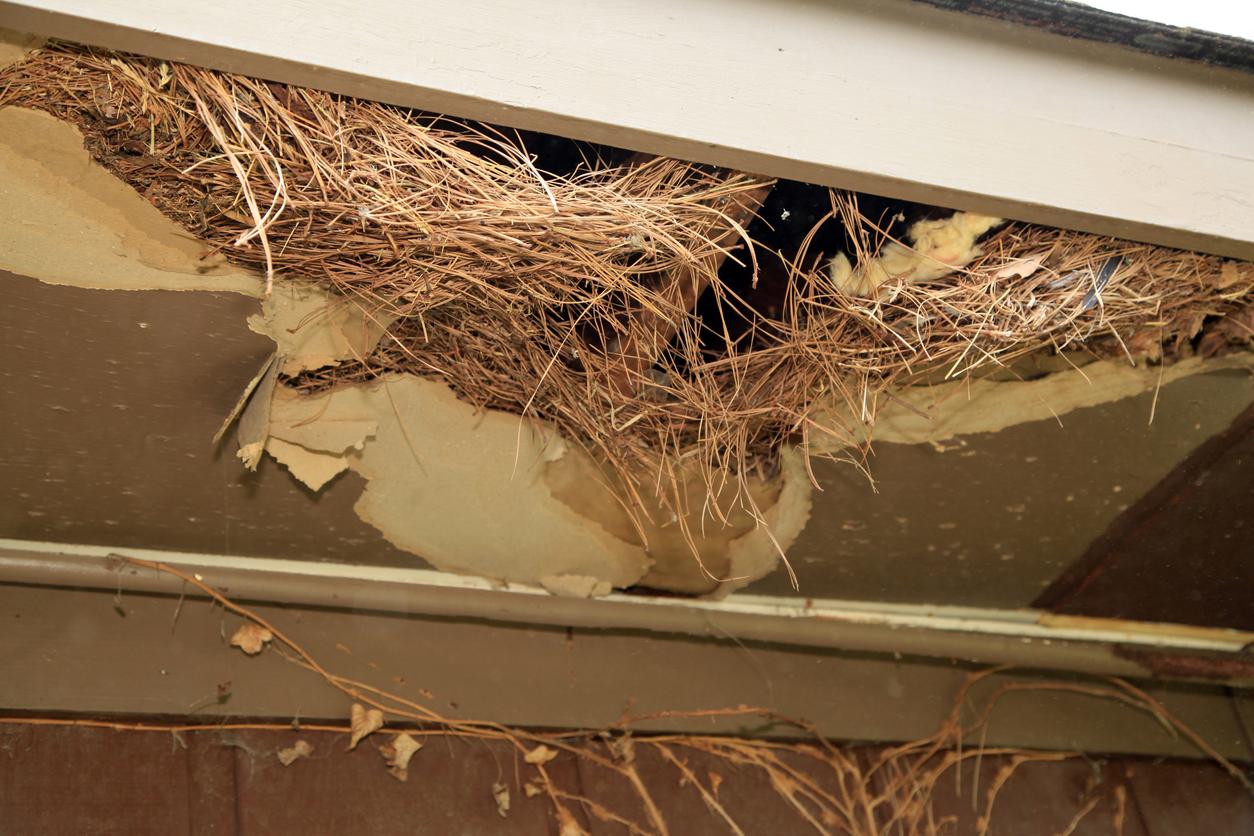What Happens if You Disturb a Rat’s Nest?
Disturbing a rat’s nest is not something you should do. Doing so will only make things worse in the long run, regardless of whether you’re a homeowner or business owner.
Rats are known to carry some serious diseases, posing a real danger to you and anyone around you. This can include leptospirosis, salmonellosis, plague, rat-bite fever, tularemia, bartonellosis and more.
The pathogens that rats carry, usually in their fur, saliva, urine and droppings, can be spread even if you simply discover the nest and don’t actually come into direct contact with the rats themselves, because the particles become airborne. That’s why it’s so important to get professional assistance from pest control experts whenever you notice signs of rats on your property.
This month at Pest Defence, we want to talk you through how to deal with a rat’s nest, starting with what they look like so that you can safely identify one without accidentally disturbing it.

What does a rat’s nest look like?
There are two ways to visually identify a rat’s nest. Here’s a quick overview of what a rat’s nest looks like from both the outside and the inside.
Firstly, let’s take the outside of a rat’s nest. You’re far more likely to spot the external signs because they like to burrow, meaning the inside of the nest itself is not something you’ll always see.
You will probably notice signs of clawing and gnawing around your home, but more concentrated around any small gaps and cracks that act as an entry point along walls and floors. Outside of your building, you may notice holes in the ground that act as a burrow entry down into the ground around the property.
So what does the nest look like inside? Often, rat nests are confused with bird nests, since they both like to accumulate soft materials. This could be your insulation, paper, card and other textiles that they have chewed up and shredded. However, unlike birds – who are more likely to use twigs and leaves – you’ll also spot rat droppings around this area, as well as the smell of a pungent odour from their urine.
How far do rats travel from their nest?
Like any nesting creature, rats won’t want to travel too far from their nest as they are likely breeding in numbers if they’ve found a space they believe to be safe. The two main reasons for them to travel from the nest are for food and more nesting materials.
The activity of rats, usually at night or dusk, can see them travel up to a mile depending on how scarce food is, though they usually don’t like to go more than 100 to 500 feet from the nest.
Will rats leave if you disturb them?

It’s easy to see why you would want to try and disturb a rat’s nest upon discovering one, but don’t be tempted. While rats might leave a nest temporarily if disturbed, they will likely only nest somewhere else close by, no doubt creating multiple nests that exacerbate the issue. On top of that, there’s also a risk that they will return to the same space if you haven’t properly dealt with the nest.
The other, and more alarming reason not to disturb a rat’s nest is that they can become aggressive. This puts you more at risk of contracting a disease. You don’t even have to be bitten to pick up a disease from a rat, simply trying to destroy an empty nest can release dangerous airborne particles within your property.
If you’ve accidentally disturbed a rat’s nest, don’t panic. Simply open the windows in the room and close it off before calling in a pest control professional. Don’t be tempted to re-enter the room as you put yourself and others at risk.
How to destroy a rats nest
The first step in destroying a rat’s nest is to remove the rodents themselves. This will ensure the nest can be safely dealt with, all without the risk of encountering aggressive rats that feel cornered.
However, it’s not advised that you attempt to destroy a rat’s nest yourself. As already mentioned, there are airborne particles that will be disturbed if you don’t have the proper equipment and experience.
At Pest Defence, we’ve got 30 years of experience dealing with rat nests, eliminating the culprits and helping safely remove and destroy the nest before decontaminating the area. We’ll also provide peace of mind with options to prevent reinfestation in future with rodent grilles, sealants and other solutions.
Put your mind at rest and avoid any unnecessary health risks – call us today for rat nest removal in London and Essex, including Chelmsford, Colchester and Brentwood.
